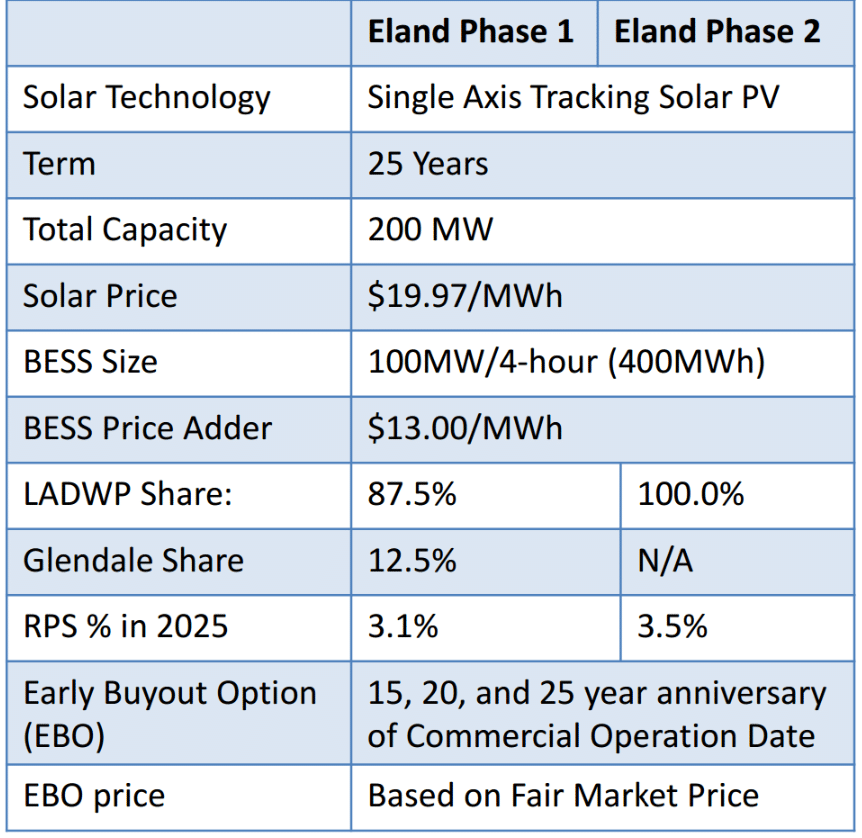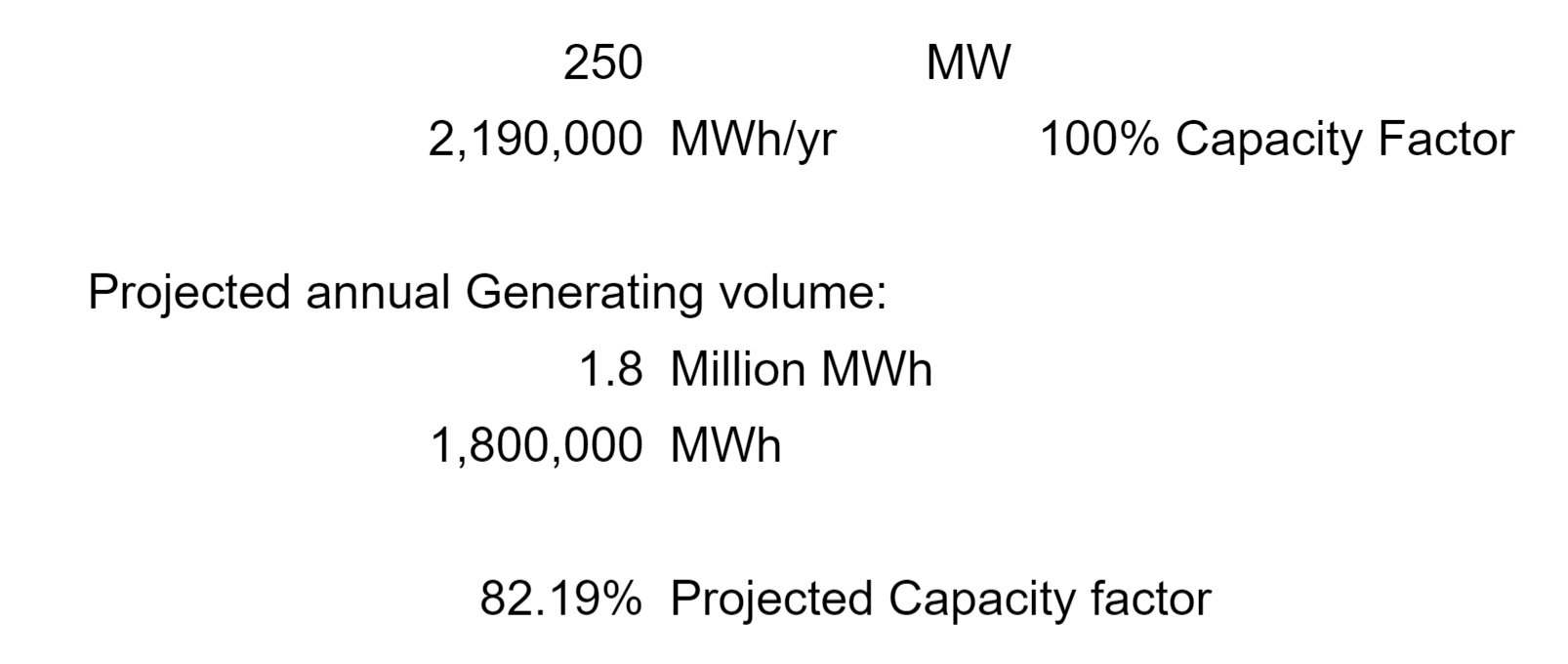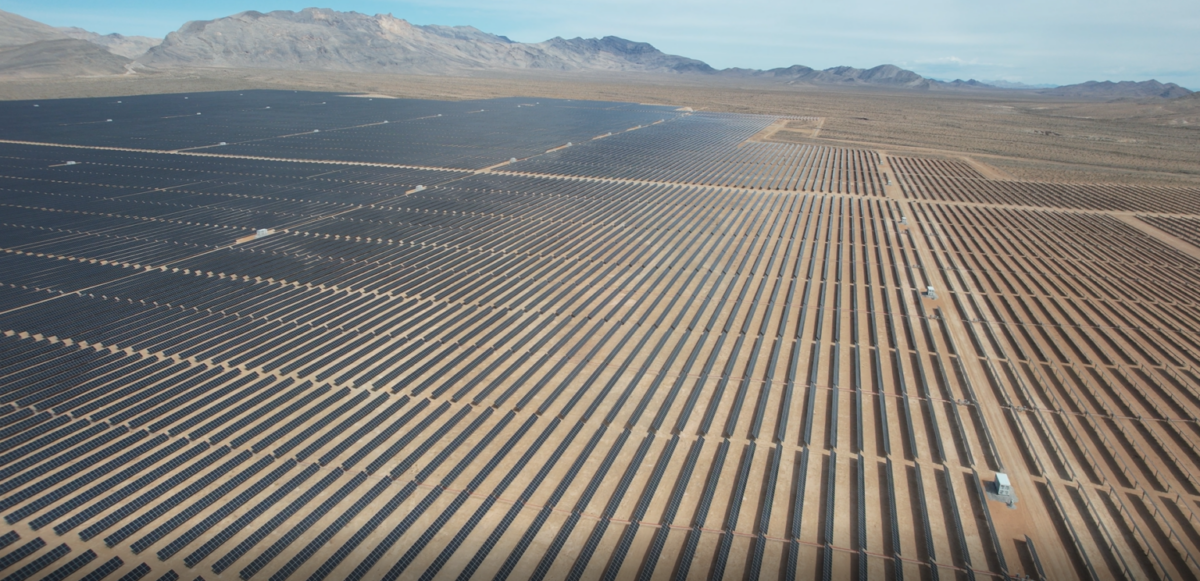Two unique power plants with high-capacity factors, one using wind and the other using solar, are set to come online. These facilities are designed to maximize the value of their interconnection (IX) connections by transmitting as much electricity as possible to the grid.
Nearly two years ago, a Portuguese project by Energias de Portugal (EDP) highlighted the enduring value of owning an interconnection (IX) location. In a grid connection auction, EDPR won the project by agreeing to pay the electrical system €4 for each megawatt-hour generated by their floating solar plant over 15 years.
Eland Solar
Eland Solar’s development team, Arevon Energy, recently announced that it closed on $1.2 billion in financing for the construction of Eland 2, the second phase of the project, located in California. This phase includes a 200 MWac/374 MWdc solar power facility paired with a 150 MW / 600 MWh energy storage system.
Initially, when the project hit the news, its former owner, 8Minutenergy, stated that the facilities would have a 60% AC capacity factor. This claim was noteworthy because the sun is only above the horizon for 50% of the time annually.

The Eland Phase 2’s high-capacity factor is at the inverter and IX level – meaning it is based on an output of 200 MW, not the solar panel volume. The solar plant’s modules total 374 MW of capacity, which is a 1.87 module to inverter ratio, much higher than the average, which is closer to 1.25 to 1.3.
For a 200 MW facility to reach a 60% capacity factor, it would need to generate an average of 2,880 MWh daily. Given that the plant is equipped with a 600 MWh battery, the solar plant would need to produce 2,280 MWh each day during sunlight hours.
Given that a 200 MW plant is limited to generating a maximum of 2,400 MWh over a 12-hour period, the Eland 2 solar facility would need to operate at full capacity for 11 hours and 24 minutes, or 95% of the day. This means it would have to start producing maximum output just 18 minutes after sunrise and continue until 18 minutes before sunset.
In a November 2022 interview with Investment Reports, the CEO of Avantus, formerly known as 8Minutenergy, reaffirmed that the facility operates with a 60% capacity factor:
We also created the Eland Solar & Storage Center, the first large-scale solar power plant with a 60% capacity factor — twice the natural capacity factor of the sun. We found optimal economics hovered at around a 60% capacity factor and designed a power plant to meet the customer’s needs.
Skeleton Creek
In 2019, NextEra announced the Skeleton Creek Energy Center, located in Oklahoma. This wind-plus-solar hybrid power plant combines a 250 MW wind farm, a 250 MWac solar power plant, and a 252 MW / 1.008 GWh battery, all connected through a single 250 MW interconnection point.
Last summer, BayWa r.e. told pv magazine USA, “These days, the name of the game is ‘maximizing sites.’” The company is boosting the output at wind sites by integrating solar and batteries, optimizing the energy flow at each IX point. BayWa’s strategy involves prioritizing wind energy, followed by charging batteries, and curtailing solar output as necessary.

When first announced, NextEra projected the Skeleton Creek facility’s annual output at 1.8 million MWh, translating to an 82% capacity factor for the 250 MW interconnection (IX). For comparison, a 250 MW facility operating at 100% capacity factor would produce 2.19 million MWh/year.
The combined hardware capacity exceeds 1.5 GW, all funneling into the 250 MW IX.
According to the U.S. Department of Energy’s Energy Information Administration, the hybrid Skeleton Creek Energy Center is listed with a 250 MW power plant capacity in its 860M report.
Local reporting from the Enid News indicates that NextEra has presented plans to local planning boards, suggesting that construction will commence soon, with completion expected in 2025.
This content is protected by copyright and may not be reused. If you want to cooperate with us and would like to reuse some of our content, please contact: editors@pv-magazine.com.









If we assume the batteries are DC-connected (which surely they must be, given the huge DC/AC ratio), that implies a 32% capacity factor for the solar plant. Which seems reasonable for a tracking system in the California desert.
Did I miss the humor? Is it April 1st? This is misleading at best and really is outright false (aka, “fake news”). They are simply playing games with numbers. Their stated “capacity factor” applies to the combined MWh production against the shared interconnection MW capacity… it does not apply to the generation itself. The Wind and Solar have actual “capacity factors” that are no better than any other Wind or Solar project.